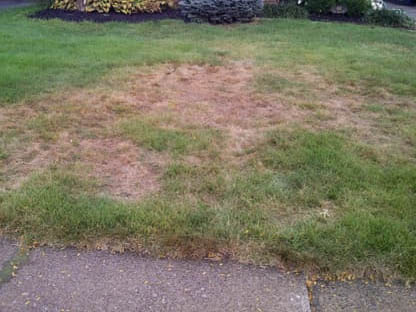RESEEDING YOUR LAWN AFTER A GRUB INFESTATION
- vclandscape
- Sep 6, 2023
- 2 min read
Updated: Mar 4, 2024
The main goal of your lawn care efforts should be to bring life into a yard. Sometimes this means starting over from scratch following a grub infestation. In cases like this, reseeding is the best treatment to add to your lawn care services once damage has occurred. It's a simple process.
Remove the dead grass. Rake the dead patches into a garbage bag or wheelbarrow and dispose of it. If you have a compost pile, you can add this without fearing disease. These bits of dead organic matter are not infected with disease; they're just no longer alive.
Loosen the topsoil. With your rake, loose ¼ to ½ inch of topsoil to create a nice planting area for your grass seed. A good way to do this is scraping back and forth across the surface.
Add fertilizer. The best kind to use is high-phosphorus fertilizer, such as bone meal, as it will encourage deep, healthy roots. Just rake it into the soil that has been loosened.
Sprinkle the seed over the loosed soil. You should sprinkle the layer so that every square inch has five to seven grass seeds. If you would like to, sprinkle a bit of topsoil on top of the seed.

Keep the area watered. You should water it about three or four times daily to ensure the water stays on the surface where the seeds are. This should be done until the seeds have sprouted roots long enough to collect their own water in the soil.
Once the grass has reached roughly 2 inches, water once daily.
Be careful mowing. Only begin mowing the new patches of grass once it has reached 3 or 4 inches in height. Take care to practice proper watering and mowing techniques.





Comments